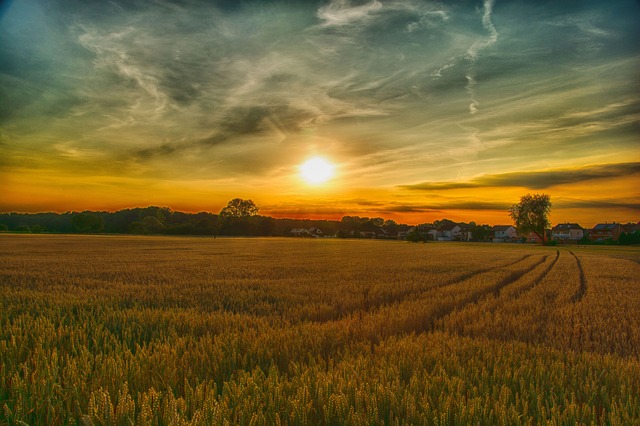Why is the sky blue and sunsets red
Why is the sky red at night?
Blue no longer reaches us! The white light of the Sun is made up of the seven colors of the rainbow. During the day the atmosphere scatters the blue color of this light.
In the evening, sunlight touches the Earth on the horizon: then it passes through a thick layer of air. This air acts as a filter, the denser it is, the stronger the colors.
But the red goes because it is less filtered! If the atmosphere was denser, the sky would be red-orange all day
Creates a rainbow?
Do you think sunlight is white? In fact, it includes all colors. It’s easy to see. It takes a sleek and transparent glass. Fill it with water and keep it in the sun on a white sheet.
You will see a small rainbow on the paper. The glass of water splits the colors of the light as well as the atmosphere. After the storm we can see a beautiful rainbow. Water drops do the same in the sky!
Zoom in on TV.
The white color that comes from the sun or elsewhere is the union of all the colours. Look at an old TV screen with a magnifying glass.
You’ll see small blue, green, or red dots. These are the colors we call primary colors because mixing gives us all the other colours.

For example, look at the yellow dot on the screen – you’ll see that there are only blue and green dots. And when the dots do light up: everyone knows!
If I were on Mars.
In the evening the sun will be blue, surrounded by green skies! During the day the sky of Mars is pinkish-orange, because the air is different from us.
The atmosphere of Mars contains a lot of carbon dioxide, while the atmosphere of Earth consists mainly of oxygen and nitrogen.
On the Moon, the sky remains dark because there is no atmosphere that can filter out the colors of the Sun.
When the Sun is at its zenith, we are seeing it almost directly because there is only a “thin” layer of atmosphere in the path of the rays.
At sunset the rays are not visible vertically and we see it on the horizon, this time through a thick layer of atmosphere.
Sunlight enters the earth’s atmosphere
When sunlight enters the Earth’s atmosphere, it is affected by the molecules in the air.
Photons of light hit and bounce off these molecules and then scatter in different directions depending on their wavelength and color (like water droplets in a rainbow scattering light across a spectrum of colors).
Blue light has the shortest wavelength and is more likely to be scattered, which is why the sky is blue… Also, the removal of blue light from the Sun slightly changes its color to red relative to space. Is.
The dispersion effect increases at sunset
At sunset, the scattering effect increases because the light has to travel a greater distance from the atmosphere. First green light, then yellow light, until finally we can see only red-orange light directly from the Sun.
Another interesting effect of the thickness of the atmosphere: refraction. The atmosphere acts as a lens that refracts the light from the image of the Sun.
So that after sunset the image of the Sun remains above the horizon for a few moments.
For more fun questions and answers on this topic, please feel free to purchase the book. Why is the sky blue? And why are sunset and sunrise red?
Sunlight propagates differently in the atmosphere. We perceive different colors in the sky depending on the angle of incidence of the light. This article explains why the sky is blue during the day and may appear reddish at sunset.
Sunset in the fields of Freiburg
clear air but blue sky
Air itself is colorless: it is transparent and colorless to the human eye. But when you look at the sky on a sunny, cloudless day, it appears blue. Since?
The answer lies in the physics of sunlight: apparently, white light is actually made up of many colors. We can see it with rainbow. Sunlight is used in its various disassembled
